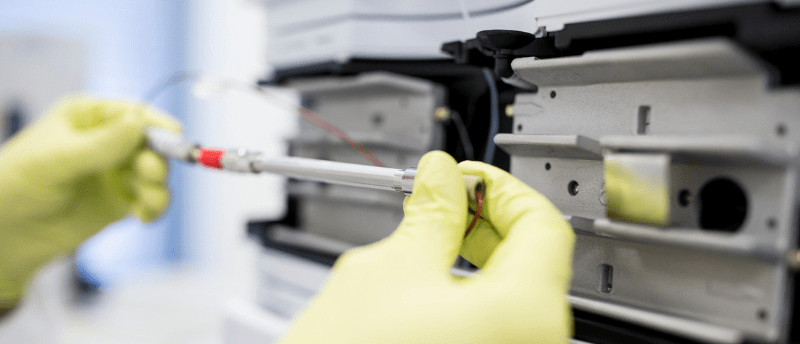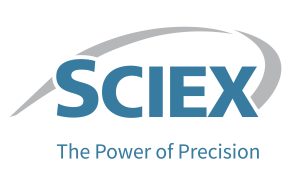Middle-down mass spectrometry: an interview with Roxana McCloskey

Mass spectrometry (MS) is a widely used tool for protein identification, quantitation and characterization and is a key technique for assessing the quality of biopharmaceuticals. In particular, MS can be used to detect and identify post-translational modifications (PTMs) such as monoclonal antibodies (mAbs) and next-generation protein therapeutics, which can affect the efficacy and safety of biopharmaceuticals.
One approach for detecting PTMs is middle-down MS, which requires extensive development and optimization for each stage of analysis. Advancements in middle-down MS technology and data analysis software have enabled the development of a new, streamlined workflow that is faster, simpler and more easily adaptable to the different kinds of PTM analyses required for various stages of drug development.

Roxana McCloskey
Sr. Global Marketing Manager, Protein Therapeutics
SCIEX (MA, USA)
Roxana has over 15 years of experience in sales and marketing roles in the MS community and specializes in communicating the advantages of MS-based applications for biopharmaceutical workflows.
- How does middle-down MS work and how can it be used for the detection of PTMs?
The middle-down approach involves performing subunit analysis on a protein therapeutic with minimal sample preparation. This enables rapid screening of protein therapeutic candidates earlier in the development process, so that the more developable proteins – those with a greater chance of success – are directed into the pipeline for further characterization. At this stage, MS identifies the presence of PTMs, their specific location and confirms sufficient sequence coverage.
With the ZenoTOF 7600 system, the middle-down subunit analysis strategy leverages an alternative fragmentation technique – electron activated dissociation (EAD) – to provide confident sequence confirmation of a therapeutic and the localization of the PTMs. The spectra generated by EAD fragmentation complement those obtained from traditional collision-induced dissociation (CID), providing more precise information on PTMs such as glycosylation and oxidation.
- What are the benefits of a middle-down MS approach compared to a top-down or bottom-up approach?
Middle-down MS combines advantages of bottom-up and top-down MS for characterization of protein therapeutics at the subunit level. A top-down MS approach sees intact antibodies such as monoclonal antibodies (mAbs) and multispecifics directly subjected to MS/MS fragmentation. This allows for minimal sample preparation but provides limited sequence coverage. A bottom-up MS approach involves peptide mapping of a mAb fully digested into peptides, commonly using multiple enzymes to achieve full sequence coverage. However, bottom-up peptide mapping involves multiple sample preparation steps during which artificial modifications can be introduced. In the middle-down MS approach, the protein is cleaved into subunits prior to MS/MS fragmentation. With less sample preparation, the chance of introducing artificial modifications is lowered. Middle-down MS also benefits from subunit characterization on more complex proteins for which location of the modification could be lost during a full digestion.
- How have technology and data analysis software for middle-down MS improved?
A traditional middle-down MS workflow relies on multiple fragmentation techniques or multiple injections to achieve high sequence coverage. These traditional workflows also require significant method development and more experienced MS users, however, MS technology advancements are helping to lower the barrier. With significant improvements in speed, sensitivity, reproducibility and data quality compared to other fragmentation methods, the EAD-based middle-down workflow has the distinct advantage of high sequence coverage in a single injection.
Intuitive software programs like Biologics Explorer software are designed specifically for biopharma characterization. Ready-to-go templates for middle-down subunit analysis of complex molecules provide interpretation data to support confident sequence confirmation and PTM analysis.
- How do these improvements help to streamline the middle-down MS workflow?
These improvements afford greater accessibility to scientists of varying MS experience levels. We hear how complex the method development to run a middle-down MS workflow is, and the degree of effort involved in data analysis in the absence of a ready-made template for biopharma characterization.
Using the Zeno trap on the ZenoTOF 7600 system improves sensitivity and detection of MS/MS fragments—a critical component of the strategic success of this approach, as many charge variants are in low abundance. EAD enables accurate localization of PTMs and together, these facilitate a single-injection workflow for middle-down analysis, saving significant time in running the instrument, performing data analysis and developing methods.
However, there is still room for growth. Currently, the middle-down workflow is a powerful confirmation tool. This requires that the molecule has already been well characterized and the scientist knows what to expect. Being able to characterize unknown modifications at this intact or middle-down level would be another significant step forward.
- Why is this workflow update crucial for bringing new biopharmaceuticals to market?
The middle-down MS workflow shortens development timelines, allowing for earlier decisions on candidate developability or for undesirable modifications to be caught and identified without extensive sample preparation. Beyond standard mAbs, this workflow also benefits from the screening and characterization of more complex proteins where a modification could be lost during a full digestion.
A large part of the acceleration in timelines lies in the software’s capabilities. By making the analysis visually intuitive and informative, scientists with varying levels of MS knowledge can have confidence in the data and use this workflow. The updated workflow fosters a deeper level of characterization at the subunit level earlier in the development pipeline, enabling faster screening for PTMs. This is critical not only in developing next-generation therapeutics, but also in monitoring these therapeutics throughout the development process.
In association with:






